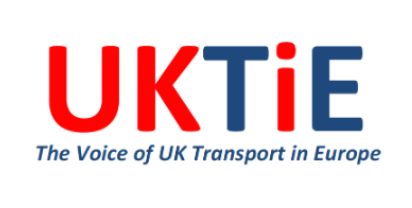The Council and the European Parliament have paved the way for the adoption of the draft directive establishing a single European railway area, by successfully concluding the tripartite negotiations between the Danish presidency, the European Parliament and the Commission on a compromise text. Today, the compromise was endorsed by the member states within the Permanent Representatives Committee. To enter into force, the text still needs to be formally approved by Parliament, whose vote in plenary is scheduled for early July, and by the Council, which is due to take its decision after the vote in Parliament.
The compromise resulting from the negotiations between the Council and Parliament at second reading includes, amongst others, the following elements:
• the independence requirements for the regulatory bodies have been strengthened, and regulatory supervision has also been reinforced, in particular through close cooperation between the regulatory bodies and national safety and licensing authorities and through tighter deadlines for dealing with complaints and information requests;
• charges for the use of railway corridors will, in principle, be differentiated in order to encourage the introduction of the European Train Control System (ETCS);
• as regards the separation between infrastructure managers and railway undertakings, a clause has been added asking the Commission to report by the end of 2012 on the implementation of the relevant rules currently in force and on the development of the railway sector and to propose, if appropriate, legislative measures in order to ensure non-discriminatory access to infrastructure;
• the deadline for transposing the directive into national law has been set at 30 months after its entry into force. The transition period granted to infrastructure managers for applying the, yet to be adopted, common arrangements for calculating the direct costs to be passed on to infrastructure users through charging, has been limited to four years from the entry into force of those arrangements.
The draft directive is a recast of the three directives of the “first railway package” on the development of European railways, licensing of railway undertakings and management of railway infrastructure (directives Nos 12, 13 and 14 of 2001). The 2001 package launched a gradual opening-up of the railway sector to competition at European level.
The purpose of the recast is to simplify, clarify and modernise the regulatory framework for Europe’s railway sector so as to increase competition, strengthen market supervision and improve conditions for investment in the sector. To that end, the recast merges the three directives, together with the amendments made to them over time, into a single text, and makes a number of other changes:
– Competition between railway undertakings will be enhanced by making rail market access conditions more transparent and improving access for operators to rail-related services such as railway stations, freight terminals and maintenance facilities. To guarantee non-discriminatory access, the recast specifically provides that a service operator belonging to a body with a dominant position on the railway market concerned must be independent from that body to a certain extent, which requires having separate accounts and independence in organisational and decision-making
terms though there is no need to create a separate legal body.
– The independence of national regulatory bodies and their powers, for instance to impose sanctions or audits, will be strengthened. Cooperation between regulators on cross-border issues will also be enhanced. This will help eliminate discriminatory obstacles to access to rail services and ensure the proper functioning of the rail
services market.
– Financing of rail infrastructure will be improved by longer-term planning, offering more certainty to investors, and by adapting charging rules so as to give incentives to modernise infrastructure, including the reduction of noise emissions.
The recast proposal was presented by the Commission in September 2010. The European Parliament reached its first-reading position on 16 November 2011 and the Council adopted its first-reading position on 8 March 2012.
Source – Council of the European Union


No responses yet